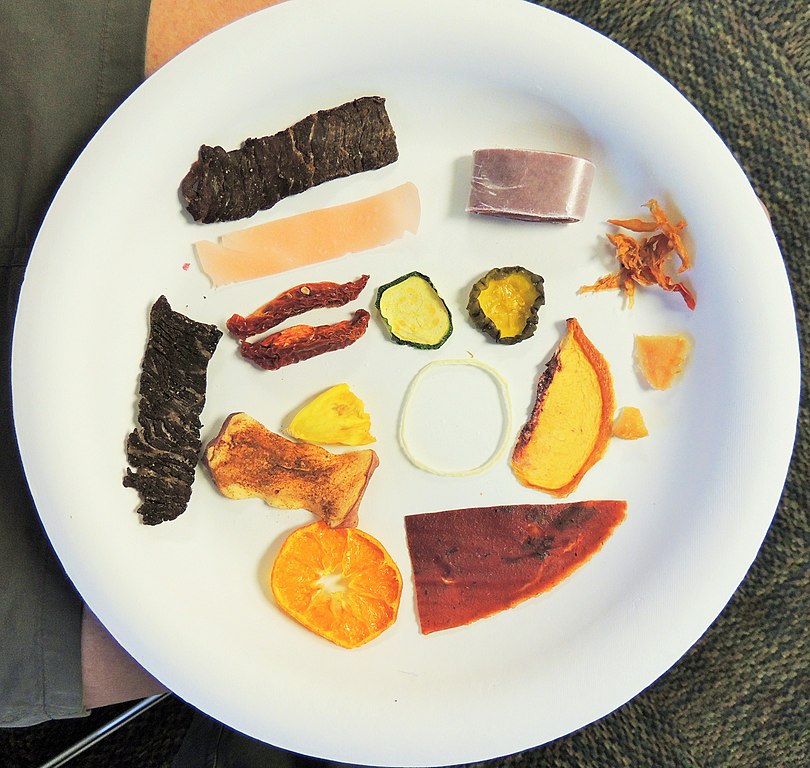

The Daily Blaze
Good morning!
It’s another beautiful summer day, and I see folks are already hard at work watering the gardens before it gets too hot out.
Looking out my window now (Hi Pablo! Hi Sandra!) I’m struck by the complexity of our routine, as repetitive as it may seem, we are all infusing the community with our own impulses and idiosyncrasies. I’ve been talking a lot with the director of our sister village in Chilpancingo and helping them replicate some of Blazing Star’s features. But even with the same garden plots and electrical grid, their home won’t be the same as ours. When we plugged together plans and systems from EcoHub in our early days, we were building our home out of the same measurements and lines of code that others had used. But the people living here make it their own, through which wildflowers we decide to let flourish and which recipes we keep in rotation.
Perhaps Blazing Star has more in common with other modern ecovillages than your average American houses do. We live in a country that fetishizes individualism, having obscure taste in music, making your yard prettier than your neighbor’s— and of course, having more money than them too. We all came here because we wanted to escape that life. We wanted to be part of a community that could be replicated through modular, open source designs. And yet, when I see our home being cloned two thousand miles away, I know that there are a million little differences thanks to all of you.
We have several new applicants visiting in the coming days, which suggests that I’m not just biased and we’re really making a special place here in mountains. So if you see me walking around with some strangers, please say hello, and save me from having to make small talk.
— David
Upcoming Events
Aquaculture hack-a-thon
- Friday, 10am–???
- Help design and build an indoor farming setup using waste water and geothermal heat.
LIVE MUSIC: Isaac and Sandra
- Sunday, 6–9pm
- Live steel drum and synthesizer, dancing mandatory.
Tonight’s Family Meal
Menu: Sweet-Potato Lentil Burgers; Salad with farmer’s cheese; peach blondies
Cooks (4–5:30pm): Susan, Adrian, Kendall
Cleanup(6:30–7:30pm): Mia, Pablo
Requests
- Please respect after-dark noise limits, I’m having trouble sleeping lately. — Maureen
- Does anyone have a hammer drill I could borrow? I’m trying to install a bike rack on the rear of my house. — Sam
- I’m planting some tress on the easter border (oak and chestnut) and could use some help digging and mulching. —Wilson
DIY Club
Adrian and Sam recently finished building a solar dehydrator and wanted to share some resources for anyone interested in following suite. This is a great way to preserve the summer harvest — without using electricity! So it’s a no brainer.

There are commercial options for solar dehydrators, but with some leftover scrap wood you can build your own. We got ahold of some special materials to follow this DIY method from Mother Earth News (metal screening, glazed plastic) but we’d be interested in trying a simpler method too to see how it compares.
Things we’ve dehydrated SO FAR: Apples, smoked onions, porcini mushrooms, chile peppers, rabbit jerky, sun-dried tomatoes (natch).
Book Club

T.A.Z. The Temporary Autonomous Zone by Hakim Bey (1985)
This Week: Page 93–147
After introducing the concept of poetic terrorism in Part 1, and navigating the many “communiques” of Part 2, we now turn to “The Temporary Autonomous Zone,” which Bey further defines in this final part of the book, along with providing numerous examples of such anarchist utopias.
Discussion Questions:
- Bey begins with a reflection on the “information networks” of 18th century pirates (97). How do these networks compare with the distributed networks of today’s EcoHub and Green activism, and ecovillages?
- Do agree with Bey’s description that “like festivals, uprisings cannot happen everyday… you can’t stay up on the roof forever” (98) How you assess the tension between temporary departures from routine and long term stability? This is not a theoretical question as we continue to plan for sustainable, alternative communities like Blazing Star.
- On page 101, Bey describes the state’s pursuit of “1:1 maps of reality” as a “political abstract grid.” He quotes Budrillard’s famous statement that a (hyperreal) map “becomes the territory.” In contraposition to this authoritative mapping, he defines psychotopogology as a means to create total representations of a space within the human mind, that are somehow more subjective: they “gesture towards” and “suggest” features. What does Bey mean that “psychotopography is the art of dowsing for potential TAZs?” Can this framework help discover and construct new ecovillages and sustainabile communities?
- How has Bey’s analysis of the digital economy and computer revolution (circa 1985) panned out in recent decades? I was amused by his description of a “lumpen yuppertariant” class that he imagined would appear thanks to the domestic affordances of computers: “housewives… who will provide their families with ‘second incomes’ by turning their own homes into elctro-sweatshops, little work tyrranies where the boss is a computer” (111-112)